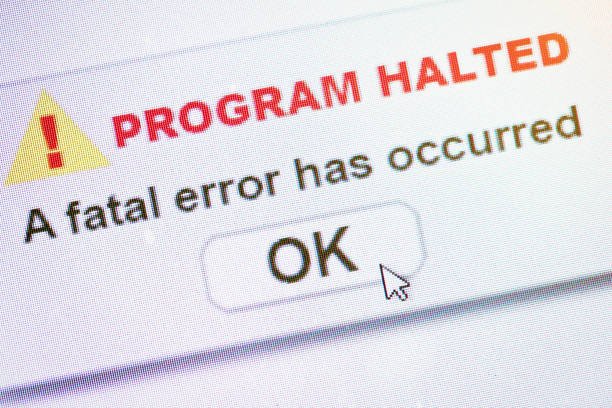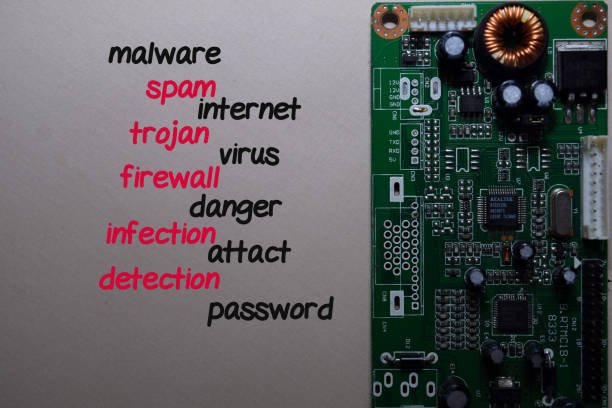A fatal device hardware error can strike without warning, leaving you staring at a blank screen and wondering if your precious files are gone forever. Whether you’re dealing with STOP 0x0000007A, an INACCESSIBLE_BOOT_DEVICE error, or mysterious SMART warnings, these critical failures can bring your digital life to a grinding halt.
The good news? Most data can be recovered, and many hardware errors have practical solutions. This comprehensive guide walks you through everything from quick troubleshooting steps to professional data recovery options. You’ll learn how to diagnose the problem, explore your recovery options, and implement preventive measures to protect your data in the future.
Time is often critical when dealing with hardware failures, so let’s dive into the solutions that can save your data and get you back up and running.
Understanding Fatal Device Hardware Errors

A fatal device hardware error occurs when your computer’s hardware components fail to function properly, preventing normal system operation. These errors can manifest as blue screens, boot failures, or complete system crashes that make your data inaccessible.
Common fatal device hardware error messages include:
- STOP 0x0000007A: Often indicates memory or file system corruption
- INACCESSIBLE_BOOT_DEVICE: Occurs when Windows cannot access the boot drive
- SMART Errors: Hard drive health warnings that predict imminent failure
These errors don’t always mean your data is permanently lost, but they do require immediate attention to prevent further damage.
Common Causes of Fatal Device Hardware Errors

Understanding what triggers these errors helps you choose the right recovery approach:
Storage Device Failures
- Hard drive mechanical failure or corrupted sectors
- SSD controller malfunctions or memory cell degradation
- Corrupted file systems or boot records
Connection and Power Issues
- Loose or damaged SATA/IDE cables
- Insufficient or unstable power supply
- Faulty motherboard connections
System-Level Problems
- Corrupted device drivers or firmware
- Registry corruption or system file damage
- Overheating causing component failure
External Factors
- Power surges or electrical interference
- Physical shock or impact damage
- Age-related component deterioration
Initial Troubleshooting Steps
Before diving into complex recovery procedures, try these quick diagnostic steps:
Check Physical Connections
- Power down completely and unplug your computer
- Inspect all cables connecting your storage devices
- Reseat SATA or IDE connections on both ends
- Check power supply connections to drives
- Test with different cables if available
Verify Power Supply
- Ensure your PSU provides adequate wattage for all components
- Listen for unusual noises from the power supply unit
- Check if other components receive power normally
Run Built-in Diagnostics
Most computers include hardware diagnostic tools:
- Windows: Use Command Prompt to run
chkdsk /forsfc /scannow - Mac: Hold D during startup to access Apple Diagnostics
- BIOS/UEFI: Many motherboards include built-in drive tests
Monitor SMART Status
Check your drive’s health indicators:
wmic diskdrive get status
If SMART reports “Pred Fail” or similar warnings, immediate data backup is crucial.
Data Recovery Software Solutions
When hardware errors make your files inaccessible, data recovery software can often retrieve them before attempting repairs:
EaseUS Data Recovery Wizard
This user-friendly tool excels at recovering data from various failure scenarios:
- Supports over 1000 file formats
- Works with corrupted partitions and formatted drives
- Includes preview functionality before recovery
- Offers both free and professional versions
Stellar Data Recovery
A comprehensive solution for complex recovery situations:
- Advanced scanning algorithms for severely damaged drives
- Supports RAID array reconstruction
- Includes boot media creation for non-bootable systems
- Professional-grade features for technical users
Recuva
Piriform’s lightweight recovery tool offers:
- Simple interface suitable for beginners
- Deep scan mode for thorough recovery
- Secure file deletion verification
- Free version with essential features
Important: Install recovery software on a different drive than the one you’re recovering from to avoid overwriting recoverable data.
When to Seek Professional Data Recovery Services
Some situations require expert intervention:
Critical Business Data
If you’re a small business owner facing a failed RAID array with irreplaceable client data, professional services offer the best chance of complete recovery. These experts have specialized equipment and cleanroom facilities for physical drive repairs.
Severe Physical Damage
When drives suffer from:
- Head crashes or mechanical seizure
- Fire, flood, or physical impact damage
- Multiple simultaneous drive failures
- Click-of-death or grinding noises
High-Stakes Personal Data
Consider professional help for irreplaceable items like:
- Wedding photos on corrupted SD cards
- Years of family videos on failing drives
- Academic work like thesis documents after laptop crashes
Professional services typically cost $300-$3000+ but offer success rates of 85-95% for recoverable data.
Real-World Recovery Scenarios
The Wedding Photographer’s Nightmare
Sarah discovered her SD card showing corruption errors after shooting a wedding. Using Stellar Data Recovery’s deep scan feature, she recovered 98% of the photos, including the crucial ceremony shots. The key was stopping use of the card immediately and running recovery software from her desktop computer.
Corporate RAID Failure
A marketing firm faced disaster when their RAID 5 array failed during a Windows update, triggering the INACCESSIBLE_BOOT_DEVICE error. Professional recovery specialists rebuilt the array structure and recovered all client files within 48 hours, preventing significant business disruption.
Student’s Thesis Crisis
Mark’s laptop hard drive began clicking ominously the night before his thesis deadline. Rather than attempting DIY repairs, he immediately created a disk image using EaseUS and successfully recovered his 200-page document along with months of research notes.
Prevention Strategies for Future Protection
Implement Comprehensive Backup Systems
The 3-2-1 Rule: Maintain three copies of important data, stored on two different media types, with one copy stored offsite.
- Cloud services like Google Drive, Dropbox, or OneDrive for automatic synchronization
- External drives for large file collections and system images
- NAS devices for automated network backups
Monitor Device Health Regularly
SMART Monitoring: Use tools like CrystalDiskInfo or built-in utilities to track drive health metrics. Replace drives showing warning signs before they fail completely.
Temperature Monitoring: Keep drives within optimal temperature ranges (typically 20-45°C) to prevent premature failure.
Maintain System Hygiene
Keep Software Updated
- Update device drivers and firmware regularly
- Install security patches promptly
- Use reliable antivirus software to prevent malware-induced corruption
Physical Maintenance
- Clean dust from computer internals every 6 months
- Ensure proper ventilation and cooling
- Handle portable devices carefully to avoid shock damage
Invest in Quality Hardware
Choose Reliable Brands: Research drive failure rates and warranty terms before purchasing. Enterprise-grade drives often justify their higher cost through improved reliability.
RAID Configurations: For critical data, implement RAID 1 (mirroring) or RAID 10 for redundancy. Remember that RAID is not a backup solution but provides fault tolerance.
User Education and Safe Practices
- Create system restore points before major changes
- Use proper shutdown procedures to prevent file system corruption
- Avoid suspicious downloads and email attachments
- Train multiple people on backup and recovery procedures
Faq About How to Fix Fatal Device Hardware Error and Recover Data
What is a fatal device hardware error?
A fatal device hardware error is a critical system failure where hardware components cannot function properly, preventing normal computer operation and often making data inaccessible.
What are the common causes of a fatal device hardware error?
Common causes include hard drive failures, corrupted sectors, loose connections, power supply issues, overheating, corrupted drivers, and physical damage to components.
Can I fix a fatal device hardware error myself?
Many hardware errors can be resolved through DIY troubleshooting, including checking connections, running diagnostics, and using data recovery software. However, severe physical damage requires professional intervention.
When should I seek professional data recovery services?
Consider professional services for physically damaged drives, critical business data, multiple drive failures, or when DIY recovery attempts fail and the data is irreplaceable.
How can I prevent fatal device hardware errors?
Prevention strategies include regular backups, monitoring drive health through SMART status, keeping drivers updated, maintaining proper system cooling, and using quality hardware components.
What are SMART errors, and how do I check them?
SMART (Self-Monitoring, Analysis, and Reporting Technology) errors are predictive warnings about drive health. Check SMART status using Command Prompt (wmic diskdrive get status) or third-party tools like CrystalDiskInfo.
What is the best data recovery software to use?
Top options include EaseUS Data Recovery Wizard for user-friendliness, Stellar Data Recovery for advanced features, and Recuva for basic recovery needs. Choose based on your technical comfort level and specific requirements.
How do I back up my data to prevent data loss?
Follow the 3-2-1 backup rule: maintain three copies of data on two different media types with one stored offsite. Use automated cloud services, external drives, and regular system imaging.
What should I do if my computer won’t boot due to a hardware error?
First, check all physical connections and try booting from external media. If unsuccessful, create a bootable recovery disk from another computer and attempt data recovery before hardware repairs.
Are SSDs more reliable than HDDs in preventing fatal errors?
SSDs generally have lower failure rates and no moving parts, making them less susceptible to mechanical failure. However, they can still experience controller failures and have limited write cycles, so backup strategies remain essential.
Protecting Your Digital Life
Fatal device hardware errors can be devastating, but they don’t have to result in permanent data loss. By understanding the common causes, having recovery tools ready, and implementing solid prevention strategies, you can minimize both the likelihood and impact of these failures.
Remember that data recovery becomes more difficult over time, so act quickly when you notice warning signs. Whether you choose DIY recovery software or professional services depends on the value of your data and the severity of the failure.
Most importantly, don’t wait for disaster to strike. Implement comprehensive backup strategies today, monitor your hardware health regularly, and keep recovery tools accessible. Your future self will thank you when a hardware error becomes a minor inconvenience rather than a major catastrophe.
For additional guidance on drive failures, check out our detailed guide on How to Fix a Dead Hard Disk for step-by-step troubleshooting procedures.